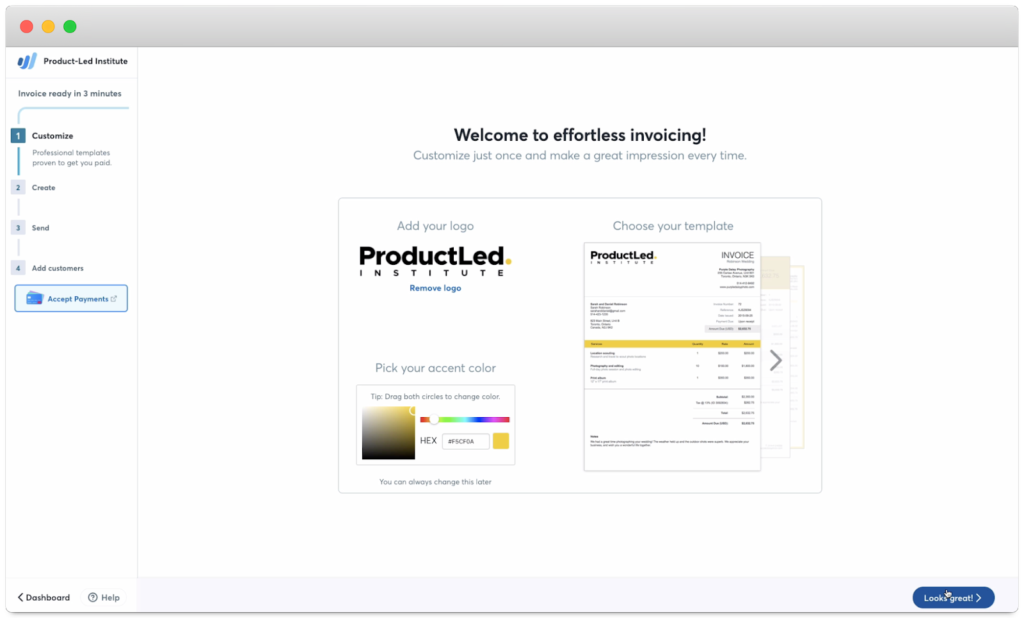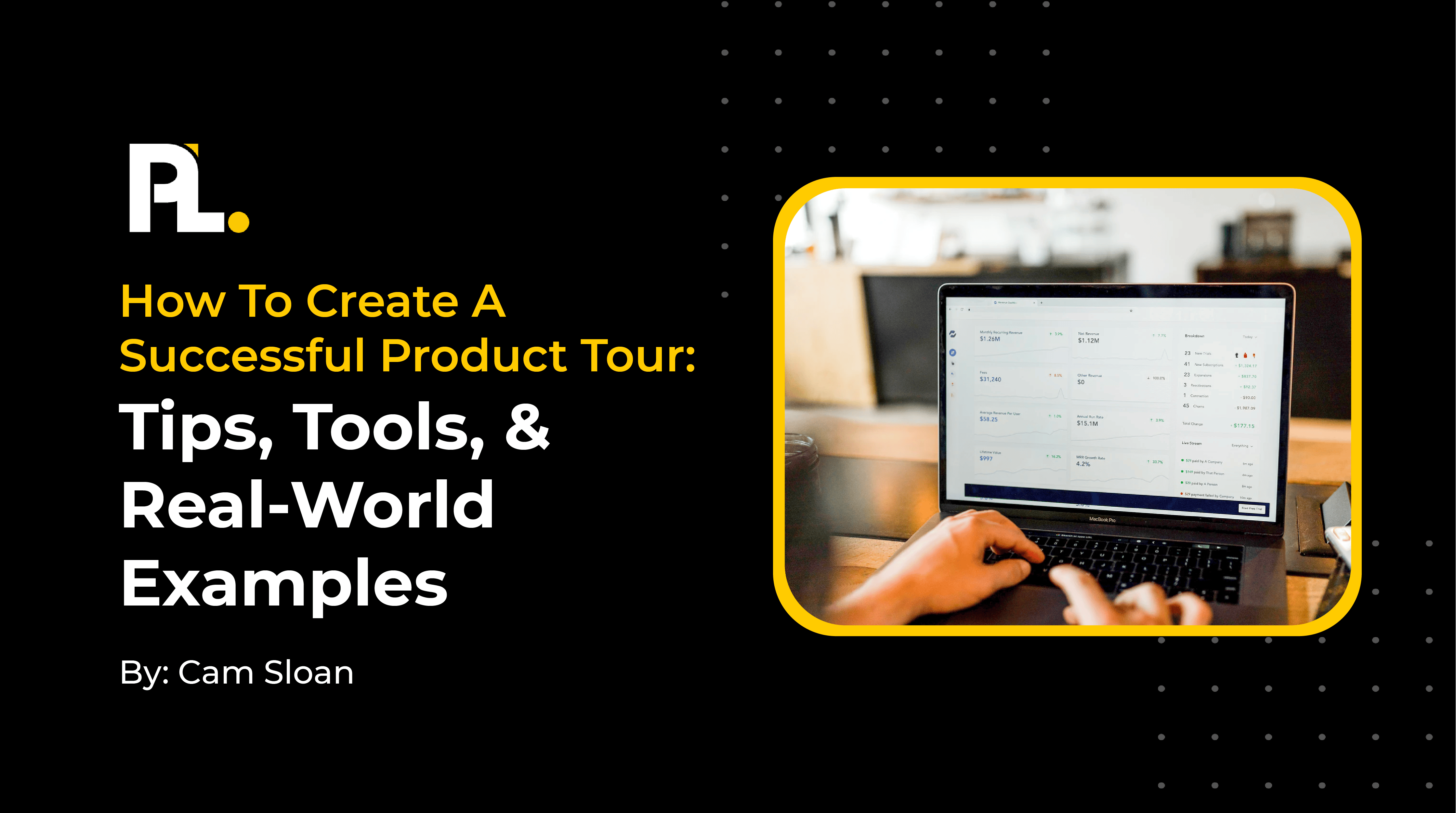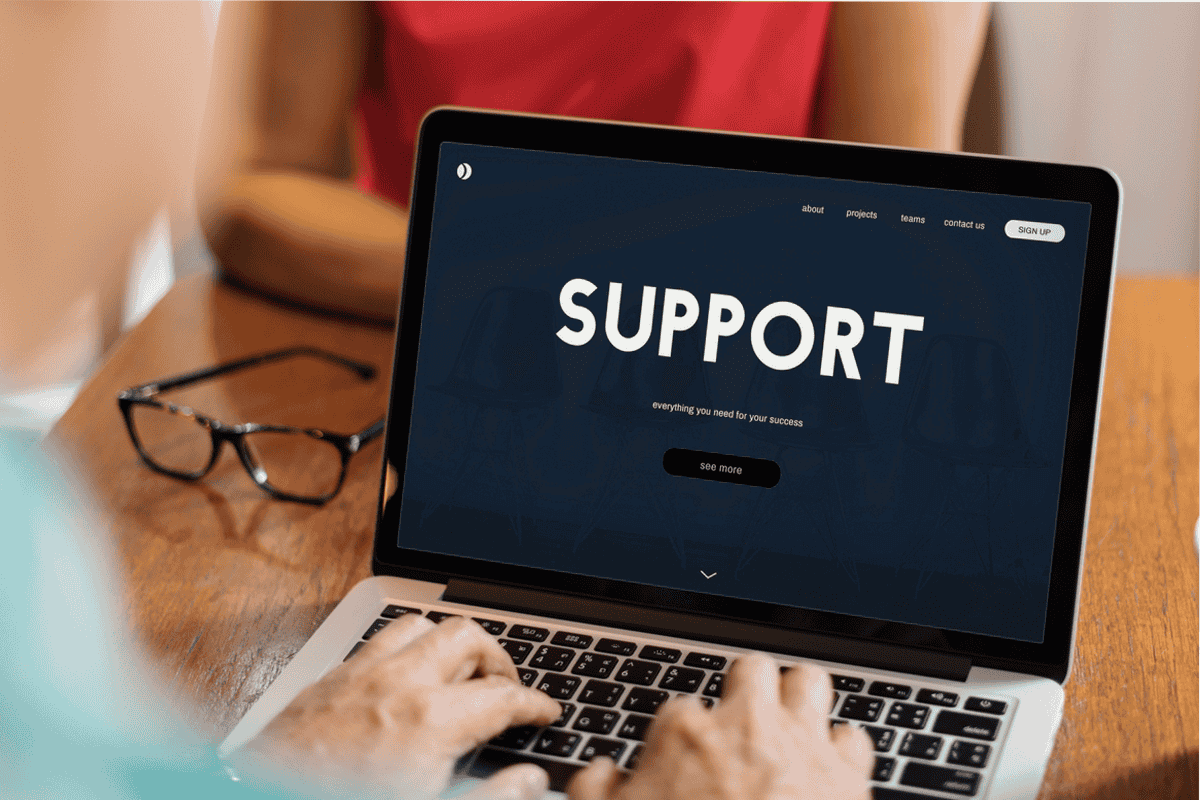
Most product-led businesses focus on signup conversion.
But if you do the math, optimizing the user onboarding process is much more impactful to your company's growth.
That’s why we set out to analyze more than 150+ user onboarding experiences. We looked at emails. We looked at product tours. We looked at social proof.
Guess what? The world’s best product-led companies share some common user onboarding traits.
And today, I’m going to share them with you.
Below are eight findings with multiple user onboarding examples of each in action so you can find inspiration from product-led companies doing it right.
So what do the best user onboarding examples have in common?
- The best onboarding experiences leverage social proof, with data, testimonials, and conversion rates
- Email verification walls are conversion killers
- Unnecessary steps discourage users from completing the onboarding experience
- Product tours should be action-focused vs. informational in nature
- Segmenting users increases their likelihood to finish onboarding
- Describing “what” and not “why”– a strong focus on the users’ goal is the most important step most companies fail to address
- Show helpful empty states that encourage the user to complete the next step
- Behavior-based emails are great prompts to encourage users to re-enter the product
Now, let's dive see those best user onboarding examples in action.
Finding #1: The best onboarding experiences leverage social proof, with data, testimonials, and conversion rates
Let’s look at the six basic types of social proof:
- Expert's stamp of approval
- Celebrity endorsement
- Trust icons
- Data
- Customer testimonials
- Reviews
You should use at least one of these in a business onboarding experience.
Let’s see them in action.
Calendly
First up: Calendly.
Here’s their homepage.

Join The ProductLed Newsletter
Practical tips to scale smarter with product-led growth
Every Sunday morning, you'll get 1 actionable deep dive to build & scale your product-led business in under 5 minutes.
No fluff, all value. 100% free.
Join 43k+ Readers
Here’s why the copy works:
- Reiterates Calendly's benefit — smarter scheduling.
- 20 million is a number that truly stands out. They're saying this works.
- They show several logos of companies that have successfully used it.
ShipBob
Next up is ShipBob.

Here’s why it works:
- They use three types of social proof – testimonials, data, and a review.
- ShipBob places a strong emphasis on data points, and you can download their yearly State of E-commerce Fulfillment Report.
Calm
Before you even sign up for Calm’s meditation and sleep app, they ask users what their intention is.

Here’s why it works:
- The data reinforces the reason visitors might be signing up for the app.
- The soft visuals and quotes set the expectation of feeling "calm."
Lucidchart
Next is Lucidchart’s signup page.

Here's why the testimonial works:
- The photo of Todd humanizes the quote.
- It reinforces the ease, functionality, and purpose of Lucidchart.
Monday
Here we have another great example from Monday.

Here’s why it works:
- It includes well-known logos like Canva and Coca-Cola.
- 225k+ customers use it already — that means it must be good!
Deputy
Another great example from Deputy:

Here's why the reviews work:
- Showcasing reviews stands out and is different than using testimonials or logos (at the very least, it’s worth an experiment).
- Deputy shows their ratings and how many reviews they have.
Wave
Another prime example is during Wave’s account signup process.

Here’s why the copy works:
- They sell you how many invoices have been sent – $24 billion.
- They tied it back to the benefit, “designed to get you paid 3x faster.”
Loom
Another great example is Loom.

Here's what works:
- They got their CEO (an expert in this space) to showcase the product.
- The story Jay shares is very personal.
- It’s very meta! A Loom showing how Loom works.
Shopify
One of the world’s leading e-commerce platforms also does a great job with this.
Here’s what they have in their onboarding email.

Here’s why the testimonial works:
- It addresses the challenge for most ecommerce entrepreneurs: lack of knowledge and resources.
SparkToro
The social proof lives on their pricing page.

Here’s why it works:
- Each testimonial shows a different use case for SparkToro.
- Bold phrases in the quotes show the tangible outcome of using the tool.
Duolingo
One of the most popular language-learning apps shows great social proof directly on their free-to-paid trial signup page.

Here’s why the copy works:
- It speaks to the desired outcome of people who signed up for Duolingo — completing a course and learning a new language!
Finding #2: Email verification walls are conversion killers
It's become the standard for most apps.
Users sign up. They hit a page: "Please verify your email."
Users wait for the email.
Minutes pass, and it's still not there.
They check spam. It's still not there.
So they give up.
We've found that 30-50% of signups don't verify their email. Why?
- Maybe they're spammers.
- Maybe they got impatient.
- Maybe they're tire-kickers
Whatever the reason, it could be hurting your growth more than you think.
Before we dive into examples of how to handle this, let me tell you a story.
Snappa
Snappa required every new signup to activate their email address before logging into the product. This is what the activation email looked like:

But 27% of all Snappa’s signups never ended up activating their email address.
These new users simply signed up and never touched foot in the product, ever.
Snappa removed the activation step right at the beginning of the onboarding process and started to see their MRR grow substantially.

Now let’s look at some solutions if you’re worried about removing this step.
Monday
If your email bounced after signing up, you're notified in a red banner that they couldn't deliver the verification email.

This allows the user to try out the product instantly.
PandaDoc
PandaDoc requires users to verify their email before they can begin sending a document.

Snappa
If you're worried about spam, use RECAPTCHA.

Finding #3: Unnecessary steps discourage users from completing the onboarding
In our experience, well over 30% of required user onboarding steps are rubbish. Yes, yours too.
There are form fields that you don’t need to ask people when signing up. There are required steps that first-time users don’t need to complete right away. And, of course, some steps don’t need to be there at all.
Every field, button click, and page is an opportunity for users to abandon your app for good.
Take a look at this form field. Would you sign up for this?

Probably not.
That's why it's essential to vet every single step in your process. To do that, you should check out this article.
In the meantime, let’s look at some examples of companies doing this right.
Grammarly
In Grammarly’s signup process, they practice progressive disclosure so that necessary steps don’t feel overwhelming.
At first, only one field is visible. The moment you tell them what team you are on, a second field appears to ask how many people are on your team, and so on.

Shopify
The second approach to simplifying complex forms is to break them up into multiple pages.
Shopify achieves this in its signup process. On the first page, they ask one question about your e-commerce business:

Once you answer, the next page appears another question, asking you to select all options related to your business.

By using a multi-step signup process, users only see a few fields on the page at a time, rather than the 14 required fields needed to complete it.
Wave
It’s important to vet what is really deemed “unnecessary.”
During the user onboarding process, Wave asks for a logo. Once they have it, they automatically identify the brand colors and update the invoice template to match the branding.

Some may think that this step is unnecessary and should be removed.
But, after doing customer interviews, the Wave team found that this step gets users excited about the product and encourages them to continue using it.
Finding #4: Product tours should be action-focused vs. informational in nature.
People don't hate product tours.
They hate:
- One-size-fits-all guide
- Being forced to the tour
- Invasive pop-ups
- Irrelevant steps
Ultimately, product tours should help put your users on the right track.
Let’s take a look at companies doing it right.
Evernote
The product tour shouldn’t be a one-size-fits-all guide.
In Evernote's case, they ask users how they intend to use the product to create a more personalized experience and help users achieve their goals.

Sprig
Users typically don’t like being forced into a product tour. So ask users if they would like to start as Sprig does.

ZenDesk
Product tours are typically between two to five but can be longer or shorter depending on the complexity of your product. The goal is to provide users with enough information to experience the product’s value without being overwhelmed by too many unnecessary steps.
ZenDesk uses four steps in its product tour.
.avif)
Hotjar
Product tours should cover important step(s) that set users up for success using the product.
So ask yourself: What are the first few steps a user needs to take to get value from the product?
To get started with Hotjar, one of the first questions they ask is: where do you want to install Hotjar?

Then, Hotjar automatically generates a code so users can install it on their website straight away.

AirTable
AirTable asks users to select a template to get them started with the product.
Notice the background?

High-performing product tours often utilize “focus mode,” where all unnecessary elements like the navigation bar are stripped away from the product until the user completes the product tour.
Finding #5: Segmenting users increases their likelihood to finish onboarding
Context and segment matter.
Most products have many different features, and the majority of the time, a user arrives to find a solution to one problem.
By helping users accomplish their desired outcome from the start, they’re more likely to see its value and adopt the product.
Miro
That’s why Miro asks users what they want to do with the product.

This allows them to segment and tailors their onboarding experience to the intended outcome of each user.
Typeform
Same with Typeform – they ask what you’ll mainly be using the product for.

Airtable
This doesn’t even need to be complicated. Instead of asking about a users’ challenge or goal, you can simply ask what team they’re on.
This is what Airtable does.

Users then see popular templates based on their chosen team to help them experience the First Strike as quickly as possible.

Finding #6: Describing “what” and not “why”– a strong focus on the users’ goal is the most important step most companies fail to address.
Often, teams approach the content of signup screens and onboarding elements as a low priority—and it shows. It’s usually focused on product features rather than communicating the benefits of these features.
This is a mistake.
Every word in the entire customer onboarding process is an opportunity to speak to users’ needs and desires. This is the ultimate motivation — show users how the product can help improve their lives.
Use content to amplify the solution to their current pain points, calm their anxieties, and help them to overcome their existing habits.
Wave
Let’s go back to the example with Wave. The third step in the signup process reminds new users of the value of their invoicing software.
To the left, it reads: Designed to get you paid 3x faster.
It’s not only great social proof but a great boost of motivation. After all, who doesn’t want to get paid three times faster?

Sprig
Going back to Sprig, they call out a leading solution to the right as you set your account up: We’ll automatically customize your company name to increase response rates.

Dropbox Paper
Another example is Dropbox Paper.
They don't say, "You have ZERO files."
Instead, they describe the value of Dropbox Paper with a CTA to get started: Create and edit docs without leaving Dropbox.

Grammarly
Grammarly takes an approach of “learning by doing.” Users see a document already filled out with highlighted grammar mistakes so that they can see the program in action from the get-go.

Notice how the last two examples are great examples of using empty states to your advantage.
This brings us to our next findings.
Finding #7: Show helpful empty states that encourage the user to complete the next step
Most SaaS products are relatively boring when you first log in. There's no data specific to the user; it's just the raw application. So, when you first log in to an application, what do you show people? Do you show them dummy data?
Instead, use the empty state to show people what they need to do to successfully set up their account and experience meaningful value in the product.
When it comes to deciding what items to include in an empty state, make sure to ask yourself these questions:
- What steps do I need for a user to experience a quick win in the product?
- What mandatory steps are there in my onboarding process?
- How can I make sure that the majority of users complete this step?
If you ask yourself those three questions, you'll have a much better idea of what items you should include in an empty state.
Gmail
In Gmail's case, they use an empty state to help the user set up their account. As you can see, each of the items listed in Gmail's empty state guides users to set up and personalize their accounts.

Story Chief
For Story Chief, they personalize the empty state and encourage users to craft their first story.

Buffer
For Buffer, they use an empty state to encourage users to connect their social media accounts. If you think about it, nobody is ever going to use Buffer unless they complete this step.
So the Buffer team has done a great job ensuring that people connect their social media accounts right from the beginning.

With empty states, avoid showing zeroes or stating negative statements. Stay positive and reiterate the value of the product.
Then direct users to the next step to experience it.
Finding #8: Behavior-based emails are great prompts to encourage users to re-enter the product
It’s best to avoid a purely time-based email flow.
The problem with this approach is:
- It does not consider what the user has already done in your product.
- It does not personalize the emails to drive users to the next step in the onboarding process.
- It does not adapt to users' needs, anxieties, and challenges.
To avoid coming across as annoying and spammy, trigger emails based on users’ actions they have or have not taken inside the product. This ensures that the communication is both timely and relevant.
Soapbox
Wistia’s Soapbox product is a perfect example of a usage-based onboarding email. After users create their first video, they send a usage-tip email to encourage them to share it with someone.
.avif)
InVision
Another type of onboarding email is a case study. This could include a video testimonial, customer story, or old-fashioned case study. InVision does this by showcasing some of the incredible designs their customers have created with the product.

Fiverr
Don’t forget about Welcome Emails! They typically have high open rates, and while it’s tempting to put a lot of product features in the email, it should only have two purposes.
First, you need to train your audience to open your emails. Second, you need to set the expectation of what's coming next.
Fiverr also does a great job at this with their welcome onboarding email.

It's a creative dude who looks like someone I could hang out with at a bar.
The call-to-action (CTA) reads, "Get Sh*t Done."
This email is full of character and personality. It’s likable!
Databox
The best time to send out your sales touch emails is as soon as someone experiences something meaningful.
For Databox, this is when you create and customize your first dashboard.

Notice how the email doesn't come across as "salesy," and the goal of the message is to help me get more value out of the platform.
Get expert help perfecting your user onboarding
User onboarding is just a means to an end – a better life for users.
Did you know 40% to 60% of users who sign up will never return to check out your product after that first experience?
That’s a major loss.
Yet, most users sign up because they genuinely want to experience the value of your product.
That’s why they signed up, after all.
However, a ton of challenges can get in their way.
Maybe your signup process is too long with too many unnecessary steps. Maybe there’s a value gap. Maybe you’re treating users as customers too early.
To successfully onboard SaaS users, they must quickly and easily experience value.
An effortless experience is the key.
You need to make onboarding effortless for users to sign up, experience value, and upgrade. This is exactly what we do at ProductLed Academy.
If you’ve been taking notes on the best onboarding practices from our examples but are still unsure which approach will make the most impact, it might be time to work with a product-led coach.
Our coaching program helps you optimize your onboarding with a proven framework designed to deliver value to users faster. Onboarding is one of nine components that Wes Bush and product-led specialists focus on in our three-phase system to scale your business and break through your PLG growth plateau.
Discover more about the benefits of our coaching program.



















